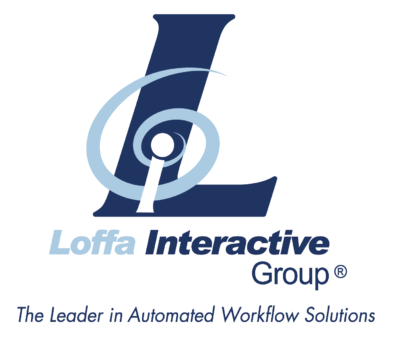How Loffa Interactive Is Transforming Compliance in the Face of Soaring FINRA Fines
Navigating the Regulatory Tides: The Crucial Role of Loffa Interactive Amidst Rising FINRA Fines
 2023 has seen a notable spike in FINRA fines, with the Financial Industry Regulatory Authority dropping a hefty total of $89 million in penalties—a 63% jump from the previous year. This hike in fines shines a spotlight on the critical role companies like Loffa Interactive Group play in steering financial institutions through an increasingly complex regulatory maze.
2023 has seen a notable spike in FINRA fines, with the Financial Industry Regulatory Authority dropping a hefty total of $89 million in penalties—a 63% jump from the previous year. This hike in fines shines a spotlight on the critical role companies like Loffa Interactive Group play in steering financial institutions through an increasingly complex regulatory maze.
Loffa Interactive, a titan in the compliance arena and a revered ally of top Wall Street firms, delivers forward-thinking tech solutions. Their roster of tools, including Freefunds Verified Direct (FVD) and Prime Broker Interactive Network (PBIN), is precisely curated to tackle the challenges sprouting from evolving regulations such as Regulation T, SEC Rule 17a-4, and the Dodd-Frank Act.
The landscape is toughening, with fines in the “supersized” ($1 million or more) and “mega-sized” ($5 million or more) categories becoming more common. This makes Loffa Interactive’s solutions not just useful but essential for firms aiming to meet these challenges head-on, offering streamlined methods for managing trade settlements, prime brokerage agreements, and electronic record-keeping.
Eversheds Sutherland’s report underscores the changing priorities in enforcement, with spoofing earning a spot on the list for the first time. It highlights how the regulatory focus shifts, underscoring the importance of staying agile. Loffa Interactive’s innovation-centric approach and its deep dive into financial sector mechanics make it a beacon for firms navigating these turbulent regulatory waters.
While the fines have bulged in 2023, the dip in disciplinary actions and restitution orders suggests an improving compliance landscape—an indicator that investing in solid compliance solutions like Loffa Interactive’s can pave the way to smoother regulatory sailing.
Key Impact Areas for Prime and Clearing Brokers
Streamlined Trade Settlements via Freefunds Verified Direct (FVD)
- Solving for Regulation T: FVD is a game-changer for brokers dealing with the meticulous balance verifications required for cash account trading. By simplifying these processes, Loffa Interactive’s tool allows for smoother trade settlements.
- Operational Efficacy: The efficiency brought on board by FVD can be a major win for prime and clearing brokers. It cuts through the complexity, ensuring trades are settled swiftly, aligning perfectly with the speed at which these firms need to operate.
Compliance Mastery with Prime Broker Interactive Network (PBIN)
- Navigating Prime Brokerage Agreements: PBIN stands out by making sense of F1SA, SIA-150, and SIA-151 forms, vital for managing prime brokerage agreements and amendments. This clarity is invaluable for executing or clearing brokers ensnared in the dense regulatory web.
- Adherence to Regulations: By streamlining the management of these essential forms, PBIN not only enhances operational efficiency but also locks in compliance, ensuring that brokers can stay ahead of regulatory changes without breaking a sweat.
 In an era where regulatory eyes are ever-vigilant, partnering with a seasoned, secure, and compliant vendor like Loffa Interactive cannot be overstated. Their blend of experience, commitment to operational excellence, and innovation positions them as the prime choice for financial institutions navigating the complex regulatory landscape. Leveraging Loffa Interactive’s solutions allows firms to concentrate on their core objectives, secure in the knowledge that they’re in full compliance with the regulatory framework.
In an era where regulatory eyes are ever-vigilant, partnering with a seasoned, secure, and compliant vendor like Loffa Interactive cannot be overstated. Their blend of experience, commitment to operational excellence, and innovation positions them as the prime choice for financial institutions navigating the complex regulatory landscape. Leveraging Loffa Interactive’s solutions allows firms to concentrate on their core objectives, secure in the knowledge that they’re in full compliance with the regulatory framework.

 At Loffa Interactive Group, our commitment extends beyond offering solutions like Freefunds Verified Direct (FVD) and the Prime Broker Interactive Network (PBIN). We’re about empowering financial services firms to turn regulatory compliance into competitive advantage. By focusing on areas like consent management and robust data protection, firms can not only navigate the maze of data privacy regulations but also set new industry standards in client trust and security. Remember, in today’s world, prioritizing data privacy is not just about avoiding penalties—it’s about winning trust.
At Loffa Interactive Group, our commitment extends beyond offering solutions like Freefunds Verified Direct (FVD) and the Prime Broker Interactive Network (PBIN). We’re about empowering financial services firms to turn regulatory compliance into competitive advantage. By focusing on areas like consent management and robust data protection, firms can not only navigate the maze of data privacy regulations but also set new industry standards in client trust and security. Remember, in today’s world, prioritizing data privacy is not just about avoiding penalties—it’s about winning trust.
 The Financial Industry Regulatory Authority (FINRA) has once again shed light on the evolving landscape of financial regulation and compliance with its latest Regulatory Oversight Report. Loffa Interactive Group, a pioneer in delivering cutting-edge technological solutions for the financial services sector, delves into the implications of this report for the industry. Boasting a legacy of over two decades servicing top-tier Wall Street firms, Loffa’s unparalleled commitment to security, regulatory expertise, and operational efficiency makes it a beacon of trust in these turbulent times.
The Financial Industry Regulatory Authority (FINRA) has once again shed light on the evolving landscape of financial regulation and compliance with its latest Regulatory Oversight Report. Loffa Interactive Group, a pioneer in delivering cutting-edge technological solutions for the financial services sector, delves into the implications of this report for the industry. Boasting a legacy of over two decades servicing top-tier Wall Street firms, Loffa’s unparalleled commitment to security, regulatory expertise, and operational efficiency makes it a beacon of trust in these turbulent times.